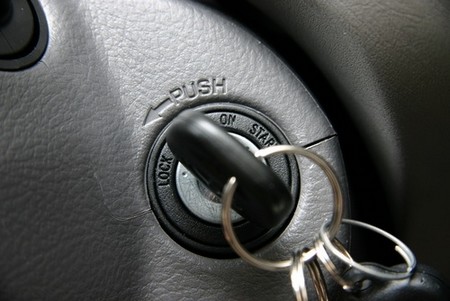Though newer spark plugs can often last up to 100,000 miles, they can still get dirty or fail prematurely. Ignition wires lose insulating ability, and the connection to the plug or ignition coil can degrade as well… These are some of the phenomena you’ll encounter in your ignition system as time goes on. In this short article, I just want to list some common problems of ignition system in your daily use and the corresponding advice for hopefully that they can be useful. A spark plug problem can be caused by the presence of water inside, if it is the case, a dry piece of cotton cloth will leave you at ease. However, if the situation does not improve at all, it is time for a detailed checkup. If you have your ignition switch or steering column heat up, try an ignition switch replacement when you find a corroded one in your system, if not, loose connection or broken ignition switch wire. As a failed start, there are several reasons for you to consult. First, the compression can be too low inside the cylinder, a slipped or broken timing belt is the most common cause. Second, not enough fuel in the cylinder, in this case, a fuel pump that does not turn on, or is worn out or improper sensor data can be the cause. The third reason is opposite to the second one, too much fuel, you’ll need a fuel system pressure test and examining scan tool data to help you identify the cause. Fourth, the primary coil does not turn on or off. Check the primary coil positive terminal with a voltmeter or test light for a simple blown fuse or open circuit. Fifth, a short in the secondary ignition circuit, it could be the result of a failed secondary ignition system insulation. Sixth, there is an open in the secondary ignition circuit. This will quickly lead to the ignition coil’s self-destruction. To service your ignition, you can follow some fairly easy procedures. By getting started, remove the fan shroud underneath the hood of your car. First of all, remember to disconnect the ignition coil’s primary wires for your safety. Then you can get a compression test, the readings the compression gauge shows should be within a 10 to 15 percent variation of optimal reading from your service manual. Next, inspect your spark plugs to see if they need to be changed. If it does need, install the new ones. Replace the spark plug wires, you should place new ones exactly the same as the ones replaced, not in the length, but also the wire route. Check your distributor cap, rotor as well as the ignition coil, if you want to change the distributor cap, change it together with rotor. For ignition coil, make sure the insulation is intact and that the connector is solid. Remove the battery and connect a voltmeter to check the voltage. Be careful when you remove it, you’d better follow professional instructions as to this move. Finally, check all the connections again to make sure they are all tight.

Ignition system maintenance and service
by
Tags:

Leave a Reply